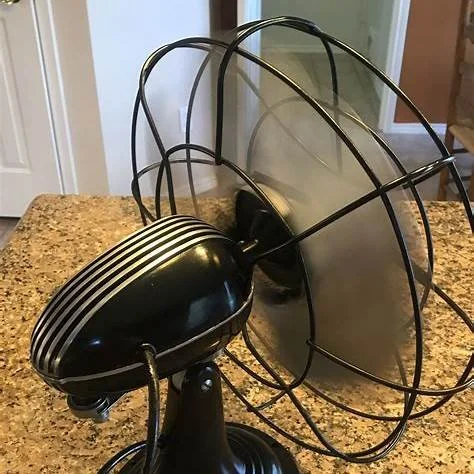The Night a Rattly Fan Invented a Classic — How White Noise Went Mainstream
Vintage electric fan, circa mid-20th century
TL;DR: In the 1960s, one sleepless tinkerer turned a noisy fan into the world’s first white-noise machine—the Marpac SleepMate (today’s Dohm). Its analog whoosh proved what sleep scientists later confirmed: your brain doesn’t crave silence; it craves consistency. Modern “sound conditioners” evolved into apps and pink/brown noise tracks, but the goal remains timeless—turn chaos into calm so real sleep can begin.
From Rattly Fan to Bedside Icon
It began with a bad night’s sleep. A restless inventor noticed that his old, clunky fan wasn’t doing much cooling—but its hum blurred barking dogs, clanking pipes, and city traffic. Curious, he rebuilt that sound on purpose. The result was a small, fan-powered “sound conditioner” with adjustable vents to tune the tone.
Released as the Marpac SleepMate, it didn’t promise dreams—it promised quiet. And for the first time, millions could buy it. Compact, mechanical, and mercifully consistent, it became the first mass-market device to sell absence instead of presence.
Why the “Whoosh” Works
Your sleeping brain is still on night watch. Even in deep rest, it listens for change: the door click, the truck’s downshift, the neighbor’s blender.
White-noise machines don’t make silence—they make stability. By generating a broadband wash of sound, they smooth out the edges of unpredictable spikes. Nothing dramatic, no sharp contrasts—just the sound equivalent of fog.
That consistency signals safety. Your brain, convinced the environment is stable, finally powers down its alarm system.
The Analog Era’s Secret Sauce
The original SleepMate was delightfully mechanical—no loops, no playlists, just real air in motion. Its asymmetric vents could be rotated to adjust tone, offering a “warmer,” more natural sound than digital hiss.
City dwellers used them to soften honking horns. Parents used them to mask hallway creaks. Travelers packed them for sanity in echoey hotel rooms. Decades before “sleep tech” became a billion-dollar industry, a fan proved that sometimes low-tech wins.
From White to Pink (and Beyond)
Modern white / pink noise machine in bedroom setting
Over time, audio science gave the whoosh a spectrum:
White noise: Equal energy across all frequencies—effective, but sometimes sharp or “hissy.”
Pink noise: More energy in lower frequencies, creating a gentler, rounder hush (like steady rain).
Brown noise: Deep, rumbling consistency—ideal for those soothed by low, full tones.
Today’s apps let you sculpt your own mix in seconds—crickets, rain, fan, fireplace, surf—whatever tells your nervous system, “It’s safe to rest.”
How to Borrow the 1960s Magic Tonight
Make it steady. Choose a sound that doesn’t “do” anything—no melodies, no waves cresting and falling.
Keep it low. Just loud enough to blur interruptions. If you need to raise your voice over it, it’s too high.
Aim it right. Position the speaker or machine between you and the noise source—door, window, or hallway.
Find your color. Classic white feels sharp? Try pink for a softer hush, or brown for a deep, velvety rumble.
Pair it smartly. Combine sound with dim light, a fixed wake time, and a calm pre-bed ritual for full-system quieting.
The fan didn’t cure insomnia—it taught the world that control isn’t silence; it’s stability.
The Takeaway
From a rattly motor to a global bedtime staple, the white-noise machine proved something profound:
The best technology doesn’t add information—it removes it.
It turns the noisy world into a gentle blur so your brain can finally let go.
#WhiteNoise #SleepHealth #SleepHygiene #SoundSleep #PinkNoise #BrownNoise #Dohm #SleepTech #SleepScience #RestorativeSleep #CBTI #Wellbeing #HealthyHabits #BetterSleepTonight #TeamFan

